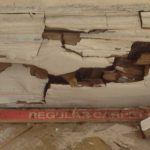Dry Rot and Wet Rot Treatment Company
Dry rot treatment specialists across the UK. We correct diagnosis and treat wet rot and dry rot daily. We offer full dry rot reports and dry rot surveys for mortgage purposes and for homeowners.
Dry Rot Treatments | Dry Rot Surveys and Reports for mortgage | Fully Guaranteed | Fix Dry Rot | How to Treat Dry Rot
Manchester | Liverpool | Birmingham | Leeds | Bolton | Chester | London | Wrexham | Coventry | Sheffield | Warrington | Leicester | Wolverhampton | Shrewsbury | Mold | Stockport | Macclesfield | Wirral | Wallesey | Most of Wales & many more
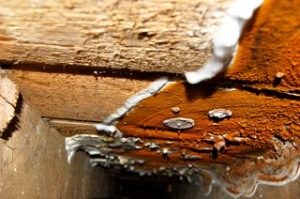 We are a specialist wet rot and dry rot company. We provide honest, beneficial and fully independent advice on all aspects of wet rot and dry rot. Offering homeowners, buyers, estate agents, banks, and commercial clients specialist wet and dry rot reports. So you’ve had a homebuyers report back from the bank and they’ve recommended that you obtain a specialist damp and timber report. They have stated that the property may be suffering from dry rot and want to know the extent of the damage. We offer fully detailed dry rot mortgage reports for this situation.
We are a specialist wet rot and dry rot company. We provide honest, beneficial and fully independent advice on all aspects of wet rot and dry rot. Offering homeowners, buyers, estate agents, banks, and commercial clients specialist wet and dry rot reports. So you’ve had a homebuyers report back from the bank and they’ve recommended that you obtain a specialist damp and timber report. They have stated that the property may be suffering from dry rot and want to know the extent of the damage. We offer fully detailed dry rot mortgage reports for this situation.
You’re a landlord and a tenant has informed you of fungus growing in the property. You don’t know if it dry rot or wet rot. This is where our specialist timber rot surveyors can help. Our timber rot surveyors will correctly diagnose the fungus and tell you if the property is suffering from any form and decay. Note: dry rot is very hard to correctly diagnose, wet rot is diagnosed as dry rot on a daily basis and costs clients thousands of unnecessary pounds. Please get the timber rot checked out by a dry rot specialist first.
What is Dry Rot & What is Wet Rot
Wet rot & dry rot is a type of fungal decay of timber and can occur when timbers are in contact with damp situations and are not ventilated properly such as subfloors. Dampness can come from defective guttering, defective plumbing, rising damp or high ground levels and many more. If there is dampness then wood rotting fungi can develop and cause substantial damage.
Special conditions are needed for dry rot to be present in a property. 9 times out of 10 the decay is wet rot. For dry rot to survive it will need a source of water, the correct temperature, oxygen and a food source, i.e timber. The optimum temperature for growth of most wood destroying fungi is between 20 degrees and 22 degrees. Lowering the temperature a little further will not normally prove fatal to fungi but they become dormant. If the temperature rises again, the fungus may return to an actively growing state and decay will then continue. If the temperature rises above the optimum the growth will slow and over 40 degrees the fungus will be killed.
Timber can be sterilised using heat. Under practical conditions, however, the time taken for the temperature to rise throughout the timber may limit the effectiveness of heat sterilisation, and the process cannot be used for effective treatment of timber. This is why this method is not used very often.
You will find dry rot in the form of white strands, sheet mycelium and fruiting bodies. White strands from dry rot are there to penetrate through brickwork and mortar joints to find moisture to transport it to dry and poor ventilated areas. Doing this will help to spread dry rot infection under floors and in ceilings. The mycelium appears as silky white sheets and can be very wet. Fruiting bodies can appear as fleshy like material and are covered in spores and this creates a red dust.
Dry Rot Treatment
First is the removal of the moisture source, creating ventilation to make a dry environment, diagnosis of fungal growth and the removal of defective timbers. Dry rot normally requires chemical treatment and cutting out and replacing the defective timber. Treatment may be required to brickwork in the form of sterilisation and the removal of any strands. Also, we will eradicate the dry rot by drilling the brickwork and injecting a fungicide to prevent further infection. After we have taken all the right procedures new timbers can be reinstated and any existing timbers will be treated with a deep kill paste.
Found dry rot or wet rot in your house?
Buying or owning a property is stressful enough without hearing that it has dry rot. Dry rot is misdiagnosed by contractors, building surveyors and general builders daily. This is why it is very important to get the correct diagnosis before any treatment is carried out. This way you won’t end up spending money on unnecessary treatment.
So, if your timber floor is moving, skirting boards are cracking or you smell a musty smell in a room. This can all be dry rot or wet rot. Contact a dry rot specialist and book a dry rot survey as the longer it’s left, the more it will cost you.
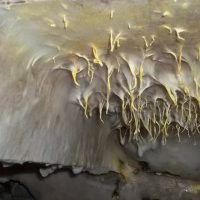
Wet rot is usually less expensive to treat because it normally doesn’t need chemical treatment. To treat you need to isolate the source of moisture, make the environment well ventilated and replace the timber.
Dry Rot refers to a type of wood decay caused by a type of fungi, also known as True Dry Rot, that digests the parts of the timber which give it the strength and stiffness. It was previously used to describe any decay of cured timber in ships and buildings by a fungus which resulted in a darkly colored deteriorated and cracked condition.
Dry rot is a type of brown rot decay caused by a type of fungi that deteriorate timber in buildings and other wooden construction without an apparent source of moisture, which is known as true dry rot.
The decayed timber takes on a dark or browner crumbly appearance, with cubical like cracking, that becomes brittle and can eventually turn the wood into powder. An outbreak of certain types of a dry rot fungus within a building is considered to be an extremely and serious infestation that is hard to eradicate, and usually requires a lot of treatment.
Eventually, the decay can cause so much damage that it causes instability and collapse in structures. True dry rot refers to the decay of timbers from only certain types of fungi that can provide their own source of moisture and nutrients, and cause decay in otherwise relatively dry timber. Such fungi have water-conducting strands that are capable of carrying water and nutrients into buildings, where they rot timber that would otherwise be dry. Both species of fungi cause brown rot decay, preferentially removing cellulose and hemicellulose from the timber leaving it brittle.
Do you require a specialist dry rot survey or a specialist damp and timber company to eradicate any form of damp decay or timber infestation? Damp Serve’s Specialist wet rot & dry rot Surveyors provide the correct diagnosis on any form damp problem or any form of timber infestation & decay.
Dry Rot
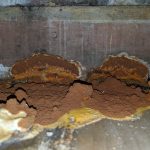
Wet Rot
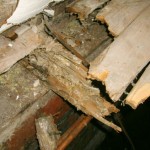
Dry Rot
